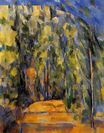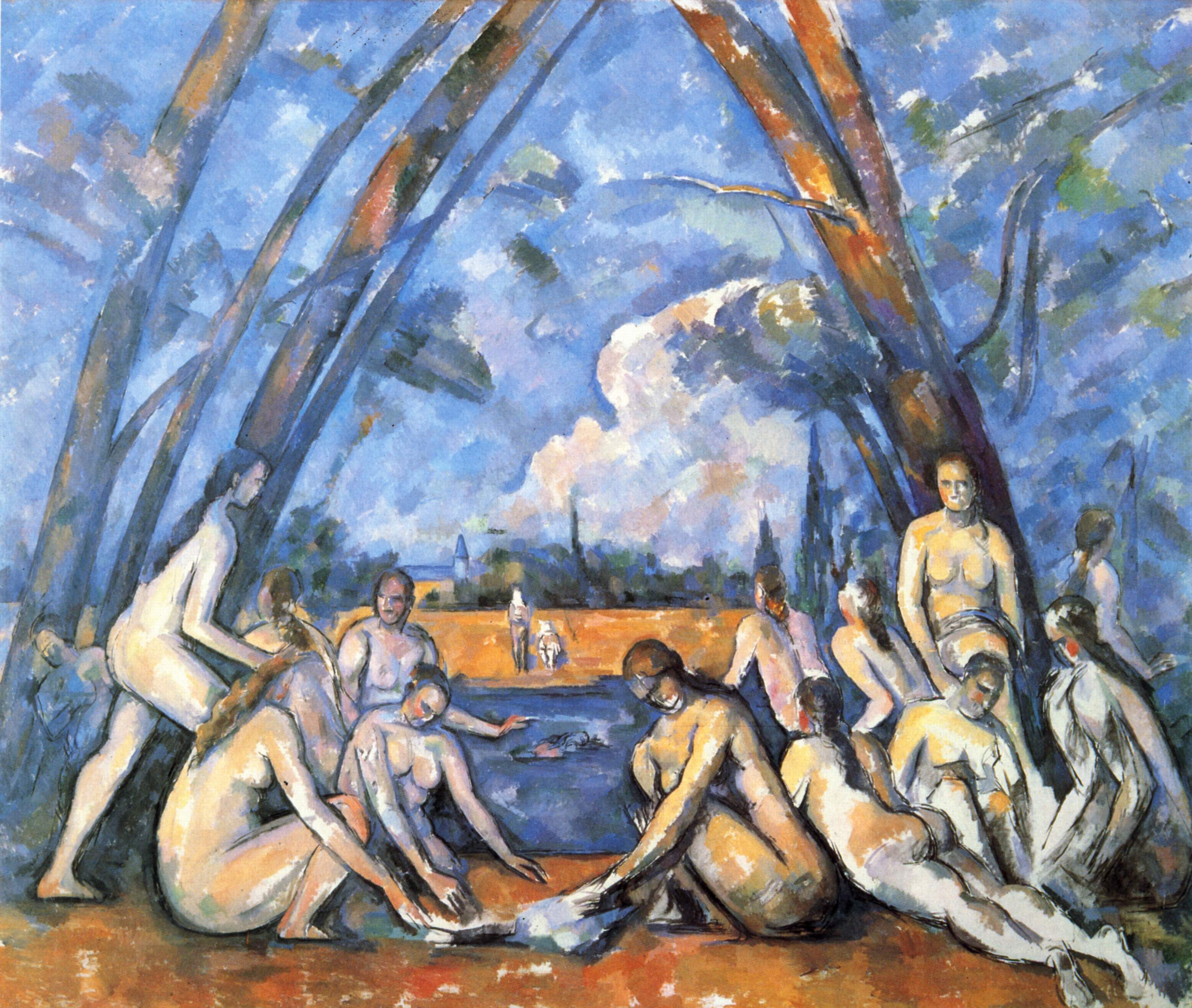Paul Cézanne - Large bathers 1906
 |
 |
 |
 |
 |
 |
 |

Large bathers 1906
208x249cm oil/canvas
Philadelphia Museum of Art, Philadelphia, PA, USA
<< Previous G a l l e r y Next >>
PublicationTwentieth-Century Painting and Sculpture in the Philadelphia Museum of Art
This is the last and largest work among scores of paintings of nude bathers, male and female, made by Cézanne over the course of his lifetime. The monumental scene conveys a grand sense of synthesis, combining figures and landscape in a stagelike setting of towering proportion. For both the formal structure of the landscape and the company of awkward bathers, Cézanne drew upon art historical precedents and his own imagination rather than natural observation. The painter exposed his artifice in technique as well as composition: the vibrant surface exults in rich, swirling layers of blues and greens, generously applied to make the air as palpable an element as earth and foliage.
Despite its grandeur, the painting has the feel of an unanswered question, a testament to the "anxiety" Picasso famously declared to be the source of his great interest in Cézanne. The artist left unresolved the startling contrast between the lushly painted landscape and the stiffly drawn, expressionless figures. A haunting stillness hovers over the scene, with its two mysterious figures in the background; an air of disquiet is signaled by a swimmer's interruption of the pond's calm surface. The painting's final state remains unfinished, revealed particularly in the seated figure at the lower right whose long arms betray their previous identity as two legs ready to depart the scene.
Painted at the very end of Cézanne s life, The Large Bathers revisits his own creative history and invokes his countless hours of studying and copying the masterpieces at the Louvre. The assembly of bathers calls to mind scenes of mythical goddesses more readily than modern French women, and the mood suggests a ritual rather than a picnic. Notwithstanding its deep roots in the past, the painting's pictorial daring is unparalleled, and today The Large Bathers appears as the opening scene to the artistic drama of the twentieth century.
Twentieth Century Painting and Sculpture in the Philadelphia Museum of Art (2000), p. 19.